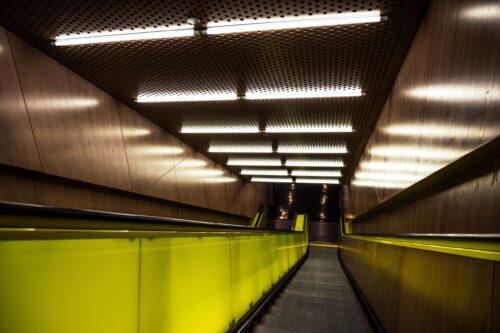Boiler Beats California Blues
Del Mar French Laundry in Monterey, California, has been operating since 1932 when Cedo Gospodnetich's family came to America and started their new business in the height of the depression. They survived the depression, but can the business survive energy costs that suddenly tripled in 2001?
Del Mar French Laundry in Monterey, California, has been operating since 1932 when Cedo Gospodnetich’s family came to America and started their new business in the height of the depression. They survived the depression, but can the business survive energy costs that suddenly tripled in 2001?
Del Mar is primarily a commercial laundry that services hotels and motels. The company’s 48 employees work in split shifts, keeping the laundry running from 4:00 A.M. to 5:00 P.M., seven days a week.
The 125 pounds of steam pressure that runs the plant is provided by two, 100 BHP Miura LX-100SG water-tube boilers. Although they do not run the two boilers at the same time—one week they run one, and one week they run the other—by having two, they know they always have a backup in case one should go down.
This thing was just huge
Del Mar’s owner and president, Cedo Gospodnetich, tells the story of the laundry’s switch from a 100 BHP firetube Boiler to the Miura water-tube boilers.
“We had a boiler engineer in the Monterey area who saw one of the Miura boilers down in Los Angeles and he told me about the savings that we could get and how much space we would save.”
Since Del Mar’s boiler was so large, taking up an entire 12-foot by 20-foot room, Gospodnetich decided to make the switch.
“It was the best thing that we ever did,” he said.
One doesn’t have to be a rocket scientist to understand the engineering design factors that create the savings. Floating headers make this possible without creating thermal shock to the boilers’ water tubes and enclosure.
These headers allow the water tubes to be short and straight so the whole boiler can be very small—taking up 33% less floor space. Comparing the available radiant surface area of one, 100 BHP firetube boiler versus one, 100 BHP Miura, there is about three times the surface area on the firetube. This area will radiate a constant amount of heat whether the boiler runs at 100% of capacity or at 10% of capacity. The lower the use of its capacity, the higher the ratio of radiation loss to usable steam production.
Fast start slows energy consumption
Additional energy savings result from the boiler’s fast start-up capability. Most boilers are turned down, but not off, when steam demand drops. Del Mar’s new boiler can be switched on and off like light bulbs, going from a cold start to steam in five minutes. And, of course, less energy is required on restart because there is much less water to heat.
At Del Mar, the old fire tube boiler used 900 gallons for start-up; the new boiler takes 60 gallons. The ultra compact boiler’s once-through, forced circulation steam boiler maintains 85% fuel to steam efficiency, and the steam can be reused.
Once the steam goes through the plant it comes back into a huge tank and then as the boiler needs water, it’s heated and ready to go. The low water content water-tubes’ surface serration optimizes heat transfer. This design is a major contributing factor to their 85% fuel-to-steam efficiencies.
Proof is in the pudding
Back in 1998, Pacific Gas and Electric (PG&E) did an energy and cost comparison for Del Mar. “Up to 2001, I have saved over $43,000 each year and greatly reduced my NOx emissions for Monterey County And, the Miura Boiler has saved me a considerable number of headaches. I had assumed from its small size that the Miura would be beneficial since it makes steam within 5 minutes from a cold start-up and saves on fuel with its low water content. However, I did not expect such extraordinary savings,” said Gospodnetich.
“Also, I now have a tremendous amount of increased space in my boiler room for additional equipment and the temperature in there has become normal instead of extremely hot. It was because of these factors that I decided to replace my second firetube boiler with a Miura,” he added.
But that was before the energy crisis of 2001.
“The current situation in California is killing me right now. My gas cost has tripled. It’s probable that, if we didn’t have the Miura boilers, our doors would have been closed three months ago,” he stated.
Cost savings
Gospodnetich exclaims, “Since we got the Miura boiler, my PG&E had averaged $6,500—until the last three or four months. Since then, it has gone as high as $22,000 per month. However, our February bill was $19,900.”
Looking at the PG&E twelve month cost comparison of the periods March 1995 – February, 1996 as compared to March, 1996 – February, 1997, the Firetube boiler’s average monthly cost was $10,050. It was using 15,000 to 18,000 therms per month compared to the Miura’s 11,000 to 14,000 per month—for an average monthly savings of $3,656. In other words, Del Mar realized a 36.4% cost savings.
With California’s current energy cost escalation, if Del Mar still had the Firetube boiler, instead of a high month of $22,000, the company would have had a bill for $34,600.
For more information about Miura Boilers, contact Mark Utzinger at Miura Boiler West, 847-465-0001, or log on to: www.miuraboiler.com .
Do you have experience and expertise with the topics mentioned in this content? You should consider contributing to our CFE Media editorial team and getting the recognition you and your company deserve. Click here to start this process.




